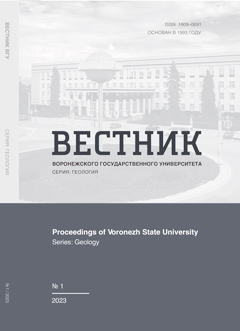Возраст сиенитов палеопротерозойского дубравинского супрасубдукционного щелочно-карбонатитового комплекса Курского блока Сарматии
Аннотация
Введение: Настоящая статья посвящена переоценке возраста сиенитов дубравинского щелочно-карбонатитового комплекса (ЩКК) Курского блока Сарматии по U-Pb изотопному датированию титанита и Sm-Nd-Sr изотопно-геохимическим данным и, как следствие, пересмотру геодинамической модели его формирования.
Методика: Выполнено изотопное датирование возраста сиенитов дубравинского щелочно-карбонатитового комплекса по циркону методом SIMS и титаниту методом ID TIMS, а также Sm-Nd-Sr изотопная систематика.
Результаты и обсуждение: Возраст циркона из сиенитов составляет ~ 2.59 млрд лет, ранее ошибочно интерпретировался как возраст их кристаллизации. Однако, данные Sm-Nd-Sr изотопии показали, что этот возраст более древний, чем возраст внедрения сиенитов, и циркон является захваченным. По данным датирования титанита возраст кристаллизации сиенитов составляет 2.07–2.08 млрд лет, что требует пересмотра модели геодинамической обстановки их формирования.
Заключение: Дубравинский щелочно-карбонатитовый комплекс с возрастом 2.07–2.08 млрд лет сформировался в супрасубдукционной обстановке.













